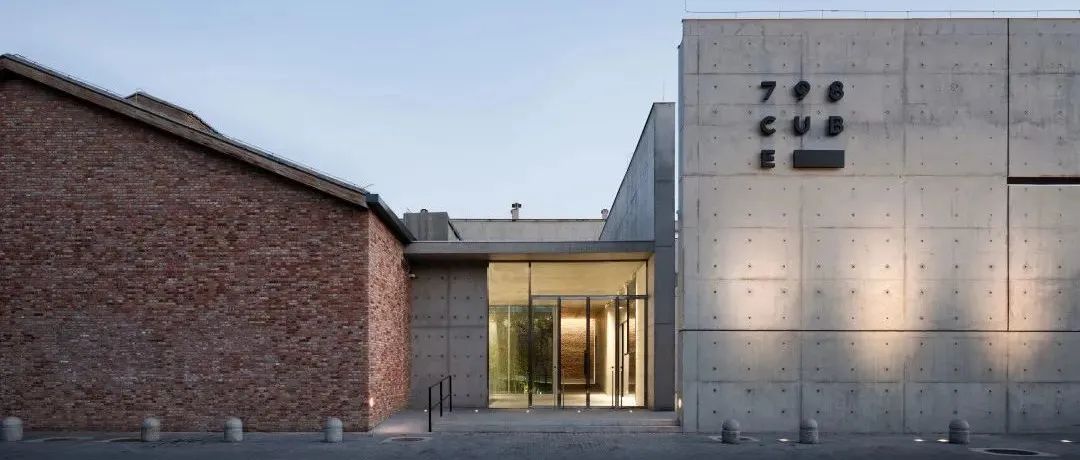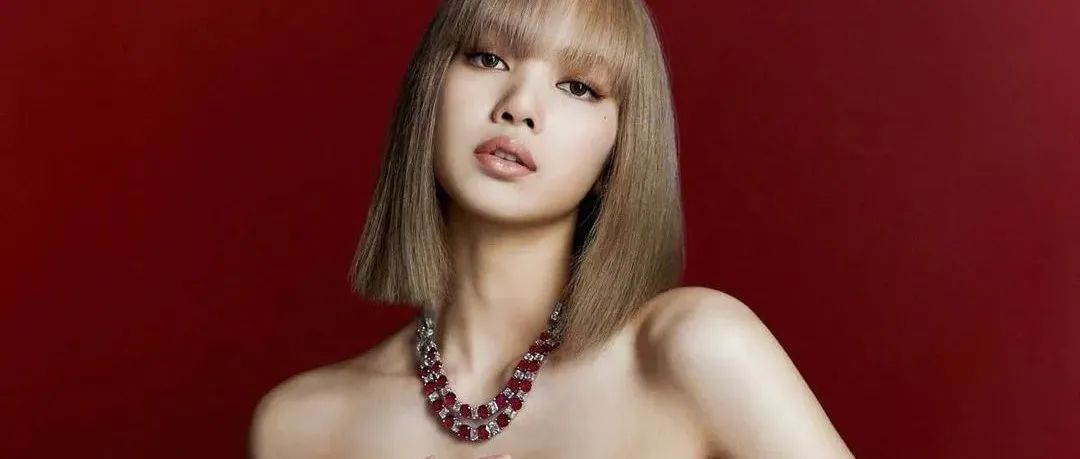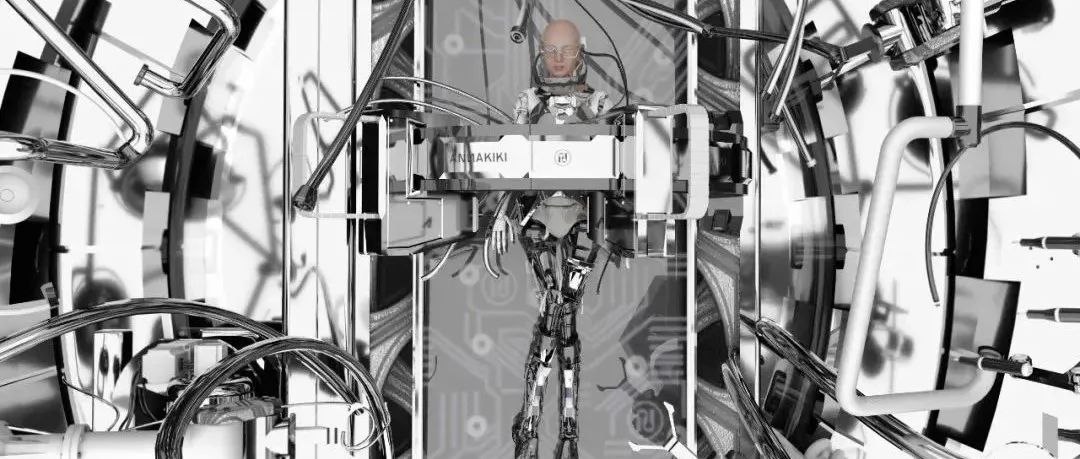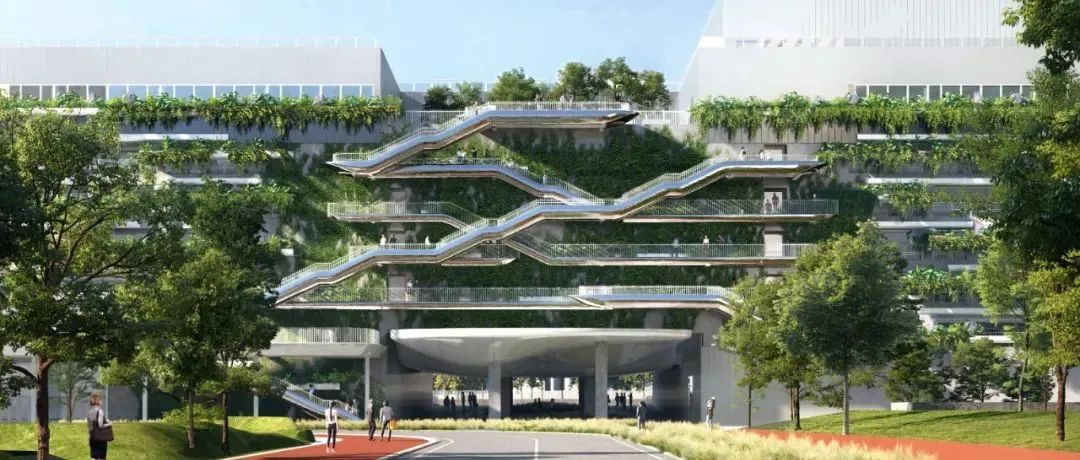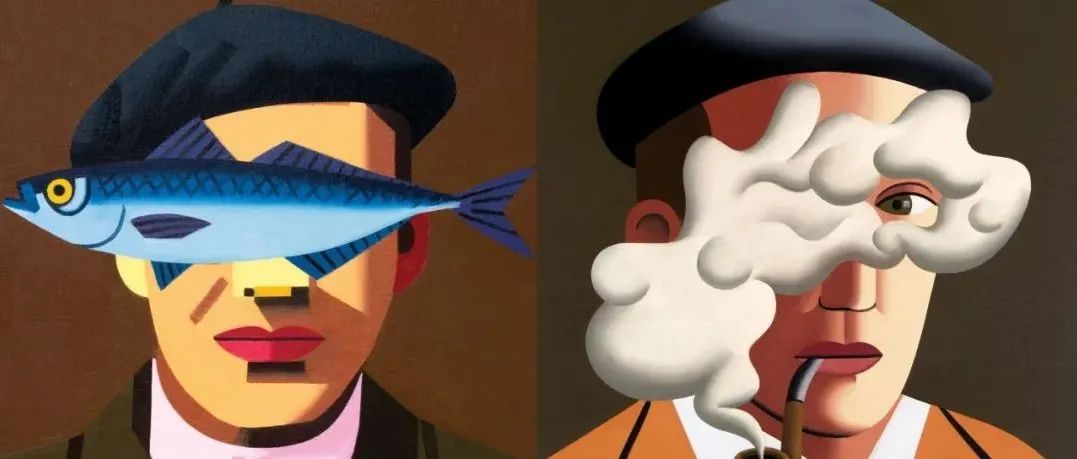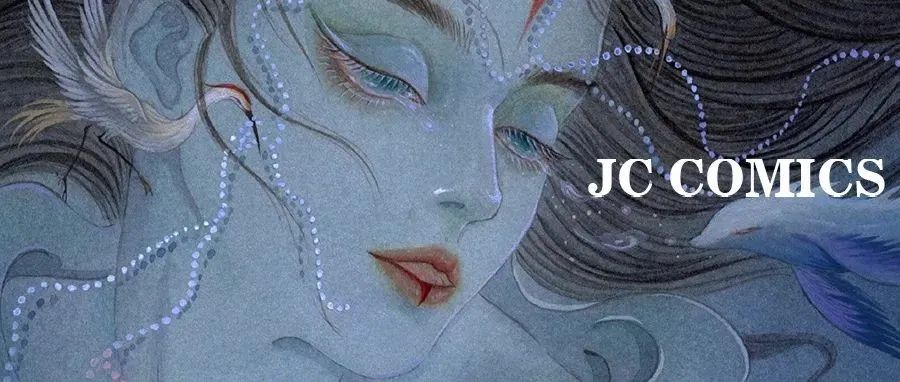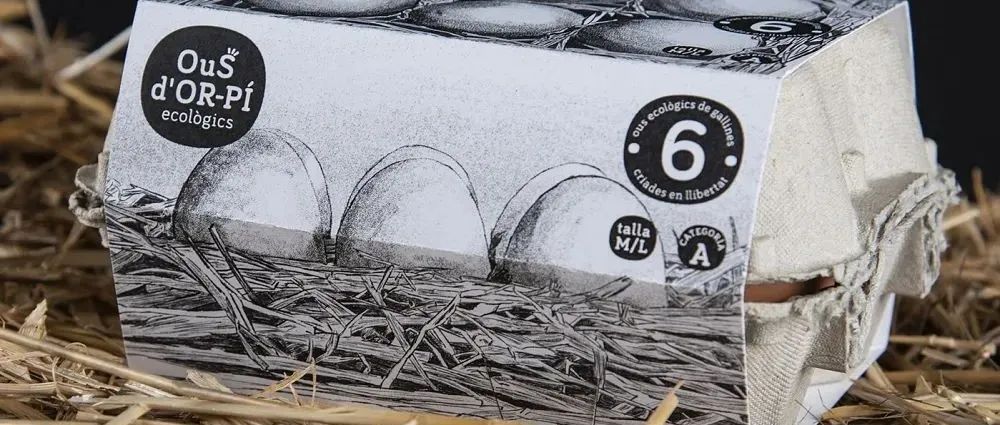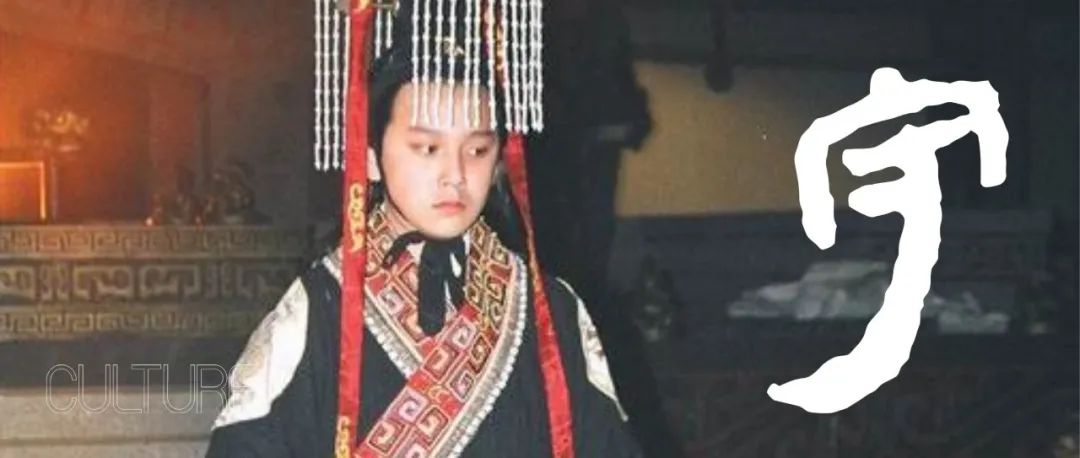798CUBE美术馆项目视频
Project video
从入口看向盒院
View from the main entrance to the courtyard
撰文:朱锫
CUBE美术馆是一个改造项目,位于798艺术区内,与毗邻佩斯美术馆和民生现代美术馆一道,是朱锫建筑近些年来以工业遗产为主题的一系列实验性的创作实践。
CUBE Art Museum, a renovation project, is located inside 798 art district adjacent to Pace Art Museum and Minsheng Museum of Modern Art, both were also designed by Zhu Pei in 2009 and 2016 separately.
场地位置
Site
混凝土墙细节
Concrete wall details
美术馆的构思始于对特定地段环境敏感深入的观察,尽最大的可能保留原有老的工业厂房,在此基础上,再注入新的建筑,从而塑造出新老建筑之间的张力,并与周边工业建筑,如佩斯美术馆、民生美术馆等建筑,彼此缝合,相互补充。
改造前
Before the renovation
研究模型
Study model
从广场看向美术馆
View from the plaza to the museum
The idea of the art museum begins with the sensitive and in-depth observation of surroundings in a specific area, and the original old industrial plants are retained as many as possible. On this basis, new buildings are injected, so as to create the tension between the new and old buildings, and complement each other with surrounding industrial buildings, such as Pace Art Museum.
美术馆的设计遵循原有工业遗产的肌理,采用一系列的“盒子”空间,塑造正交几何形体的秩序,一方面,这些盒子空间严格地按照原有老厂房建筑的基础和轮廓,另一方面,也映射798 地区工业厂房平铺直叙的规划思想与朴素的建造逻辑。特别值得一提的是有着魔术般可变的中心院落,它的轮廓也是按照原有装卸货空场而界定的,南侧是借助一道独立的现浇混凝土高墙,将佩斯美术馆西侧的广场区隔开了,在强化了自身内向的领域感的同时,也将原有的、被厂房三面围合的装卸货空场转换成相对封闭的中心院落,巨大的钢梁式滑动吊车横跨在南北的混凝土墙上,它不仅可以悬挂艺术装置,也是张拉一个个自然下垂、近似反拱、形态可变的帆布的机械牵引装置。根据天气、阳光角度,这些反拱形态的帆布可以任意开合,遮阳避雨。独立混凝土墙体上藏有可以水平移动的大门,以利于超大艺术装置的运输到院落中。中心院落是人流聚集的场所、开幕式的场地、也是户外展场。
朱锫草图
Zhu Pei's sketch
反拱形态的帆布机械装置
A canvas mechanical device in the form of a reverse arch
剖轴侧图
Cutaway axonometric
盒院
The courtyard
反拱形态的帆布机械装置与金属翻转门围合出相对独立的空间,可用于开幕式场地、户外展场
Inverted arch canvas and metal turning door enclose a relatively independent space for the opening ceremony and outdoor exhibition
The design of the art museum traces the texture of the original industrial heritage, adopts a series of cubes to shape the order of orthogonal geometric shapes and reflects the construction and planning logic of 798 art district. It is particularly worth mentioning that the magically variable central courtyard transforms the original square surrounded by the three sides of industrial plants into a relatively closed central courtyard with the help of an independent cast-in-situ concrete wall. The huge steel beam sliding crane spans the concrete walls from north to south. It can not only hang art installations, but also a mechanical traction device, which opens canvas with natural drooping, approximately inverted arch and variable shapes one by one. According to the weather and sunshine angle, this inverted arch canvas can be opened and closed at will for shading and rain protection. It is a place where people gather, a venue for the opening ceremony and an outdoor exhibition.
美术馆的设计再次探索了无柱、水平延伸的结构形式和材料的表现力。新建造的两个展厅都采用无柱大跨现浇混凝士结构,一个是采用巨大的倒拱式曲面横梁,伴随着自然天光从比邻的两个拱之间漫射下来,也和中心院落的形似倒拱的帆布的机械装置相呼应。从结构角度上看,倒拱式曲面横梁被两侧的混凝土结构剪力墙体所支撑,展厅内部的白色美术馆墙与倒拱式曲面横梁留有一定宽度的缝隙,可以清晰地表达结构体系和受力关系;另一个是混凝士密肋式大跨橫梁结构体系,密肋横梁薄而高,凸显钢筋混凝土结构和材料特性。
朱锫草图
Zhu Pei's sketch
主展厅
Main exhibition
主展厅
Main exhibition
朱锫草图
Zhu Pei's sketch
地下一层展厅
Exhibition hall on basement 1F
首层平面图
Ground floor plan
地下一层平面图
Underground floor plan
剖面图
Sections
在新建造的两个展厅与老的红砖厂房之间,插入了一个近14米高有着自然天光的垂直竖向的立方柱体空间,东侧是中性的白色墙体,北和西侧是老的红砖砌筑墙体,南侧是宽大透明的客货两用电梯,它近似美术馆内部空间的中枢,连接着位于不同标高的空间。它又像一个光井,直接插在建筑最深、暗的部位。当人们置身于此,可以清晰地感知新旧建筑之间的关系,以及各个空间的标高变化。一个薄薄清水混凝土“天桥”伴随着高低变化的踏步,游离于四面的墙体,蜿蜒螺旋而下,逐渐演变成楼梯,把门厅、上层展厅、报告厅前厅,下层展厅自然的连接在一起。
序厅
Foyer
中庭
Atrium
地下一层前厅
Foyer on basement
视线穿越透明玻璃的客货两用电梯,可以看到艺术品在装卸货区域的工作状态,是一次将美术馆背后神秘的工作场景融入公共空间的尝试。
序厅
Foyer
装卸货与仓库
Loading dock and storage
天光与砖墙细节
Skylight with brick wall details
展厅
Exhibition hall
学术报告厅
Lecture hall
美术馆的设计也捕捉了798工业厂房的材料特点,以朴素的现浇混凝土、红砖为主要材料,着力突出这两种材料在结构形式与围护墙体之间的交接、转换的建造特点,蕴含着798工业建筑所特有的建构文化。
盒院
The courtyard
主入口
Main Entrance
The design of the art museum traces the texture of the original industrial heritage, adopts a series of cubes to shape the order of orthogonal geometric shapes and reflects the construction and planning logic of 798 art district. It is particularly worth mentioning that the magically variable central courtyard transforms the original square surrounded by the three sides of industrial plants into a relatively closed central courtyard with the help of an independent cast-in-situ concrete wall. The huge steel beam sliding crane spans the concrete walls from north to south. It can not only hang art installations, but also a mechanical traction device, which opens canvas with natural drooping, approximately inverted arch and variable shape one by one. According to the weather and sunshine angle, these inverted arch canvas can be opened and closed at will for shading and rain protection. It is a place where people gather, a venue for the opening ceremony and an outdoor exhibition.
项目名称:798CUBE美术馆
设计年份:2015-2016年
建成年份:2020年
建筑面积:3541㎡
地点:中国北京市朝阳区酒仙桥北路798艺术区创意广场北侧
建筑、室内、景观设计:朱锫建筑设计事务所
主持建筑师:朱锫
设计团队:Shuhei Nakamura,张顺,由昌臣,刘伶,王立言,贾彬,丁新月,常江
结构、机电顾问:中国美术学院风景建筑设计研究总院有限公司
照明顾问:北京宁之境照明设计有限责任公司
业主:北京七星华电科技集团有限责任公司
总承建商:邯郸第二建筑安装有限公司
摄影:金伟琦,朱润资
视频:朱锫建筑设计事务所
Project name: CUBE Art Museum at 798
Design Year: 2015-2016
Completion Year: 2020
Area: 3,541sqm
Location: North side of Creative Square, 798 Art Zone, Jiuxianqiao North Road, Chaoyang District, Beijing, China
Architecture, Interior and Landscape Design: Studio Zhu Pei
Design Principal: Zhu Pei
Design Team: Shuhei Nakamura, Zhang Shun, You Changchen, Liu Ling, Wang Liyan, Jia Bin, Ding Xinyue, Chang Jiang
Structural and MEP Consultant: The Design Institute of Landscape & Architecture China Academy of Art CO., LTD.
Lighting Consultant: Ning Field Lighting Design CO., LTD.
Client: Beijing Qixing Huadian Science and Technology CO., LTD.
General Contractor: Handan Second Building Institute Co., LTD.
Photography by Jin Weiqi, Zhu Runzi
Video by Studio Zhu Pei
本文由朱锫建筑投稿
本文来自微信公众号“匠山行记”(ID:gh_d836161f0f54)。大作社经授权转载,该文观点仅代表作者本人,大作社平台仅提供信息存储空间服务。


